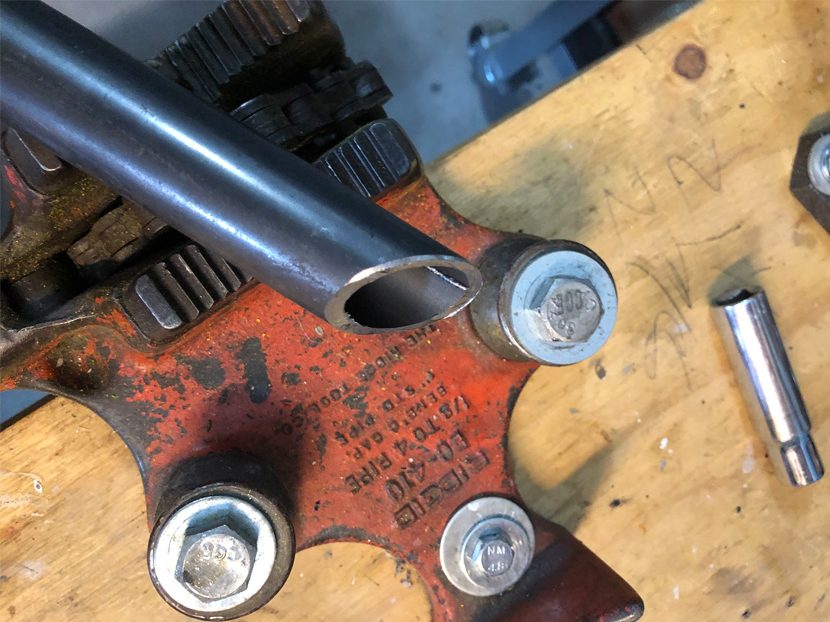Grinding My Gears
My pet peeves: factory-installed pressure relief valves and inconsiderate customers.

I may get some eye rolls from boiler manufacturers on what I’m about to say, but I blew that stop sign long ago, so why stop now? I wish they would just leave pressure relief valves out of the residential hot water boiler packages and let contractors choose their own. Or better yet, put a better one in the boiler package.
Why would I say such a thing? What’s my problem with boiler manufacturers? I’ve no problem with boiler manufacturers except for this one pet peeve. I say it because if I were still a mechanical contractor, I would welcome a price increase on the boiler to get this upgrade. It would save me the trouble of spinning off the one that comes with the boiler and spinning on a better one.
Early on, we’re all taught the ins and outs of relief valves. What to do and what not to do and if you do that, the boiler will blow up. It’s important stuff, this list of things given to us:
- Install the relief valve on a horizontal plane.
- Terminate the discharge pipe within six inches of the floor.
- If you’re using iron pipe, don’t leave threads on the bottom of it. Ideally, cut the bottom of the pipe at an angle.
- Use the minimum number of 90-degree fittings possible.
- Discharge pipe size must be the same size as the outlet of the relief valve.
- Valve lever must be exercised once a year to ensure the waterways are clear.
That’s it. That last bullet point is why the choice of pressure relief valve should be left to the contractor or give us a better one. Here’s why — look at the typical pressure relief features used on residential hot water boilers:
- Stainless-steel ring;
- High-heat-resisting silicone disc; and
- Bronze seat.
Now, take a look at what you’ll get with a pressure relief that costs a bit more than $15:
- Nonmechanical seat-to-disc alignment that will not stick or freeze;
- Water seal of high-temperature-resisting materials isolates spring working parts from water during relief; and
- A seat located above drain; water can’t be trapped and sediment can’t foul the seat.
Suppose service technicians' expectation includes lifting and exercising the relief valve every year on preventative maintenance calls. In that case, the expectation also should have assurances that once the lever is raised, it will reseat without leaking. That’s not asking too much, right? I don’t think so, but it rarely happens with the ones from the factory. And if it does reseat the first year or two, it most likely won’t in year three or four. At least, that’s been my experience.
Here’s another thing the service tech has to deal with. The preventative maintenance call on the 3-year-old boiler that was working fine before you arrived, and supposed to cost X amount of dollars, now costs two or three times that. And before proceeding with the valve replacement, the tech has to explain it to the customer. If you’re reading this, you already know how the conversation is going to play out.
And here’s how it gets worse for a guy like me. The boiler needs to be drained; maybe the whole system needs to be drained if isolation valves weren’t installed. The boss is going to expect you to collect for every cent you’re there. I get it, but the customer is going to be pretty upset about the whole deal. And I get that, too.
The concept of fairness and honesty within me gets all jammed up because I’m caught in the middle between them. Here’s how I handled this situation as a contractor as opposed to as an employee. I’d give the customer the option of upgrading to a better relief valve before the job is even started. Maybe manufacturers could offer that choice as well?
Respect and courtesy
One more thing that grinds my gears and then I’ll shut my piehole. It involves customers this time.
You’ve spent two months, off and on, trying to close this sweet boiler and near-boiler piping job you’d really like to get. You know it will make an impactful improvement on what’s there now — and you’ll make a tidy profit while doing it.
Finally, you get the green light to move forward. You get your down payment, order the equipment and material from your supply house. Now, you’re setting up shop to prefab the near-boiler piping, which is always a favorite of mine. You’ve dotted your Is and crossed your Ts. You’re as prepared as you’ll ever be. You get the trucks loaded the night before. You’re cocked, locked and ready to rock come morning.
The customer knew to expect you and the guys at 7:30 a.m. I always told my guys — if you’re not at the jobsite five minutes early, you’re late. I’m tough on things like that; I got it from my dad.
You roll up at 7:15 because it’s what you do. The guys get there 5 minutes later, but it sure doesn’t look as if the homeowners are ready. Shades are drawn, there are 6 inches of fresh snow and three cars still plopped down, in your way, on the driveway.
At 7:30, the prescheduled time, there are still no signs of life after ringing the doorbell. When 7:40 rolls around, you impatiently ring the doorbell again. Nobody answers, so you try again. Nothing. You bang on the door, expecting different results. Still nothing.
While mumbling some unrepeatable words under your breath, you head back to your trucks. You trying calling them, but it goes right to voicemail. You tell your guys you’ll give them another 20 minutes or so.
It’s 8:20, and you’re ready to move on to something a little more productive when the front door slowly opens, and your customer appears in a bathrobe, waving a finger telling you to hold on a minute. You’re thinking, really? You’ve been holding on for almost an hour with three guys. You’ve already lost money on the job; now you need to wait until the driveway is cleared of snow and cars.
This is not a good way to start the day, and there are many ways to get off to a bad start on any given morning. But something like this? It is so disrespectful and inconsiderate of people in the trades.
Despite all the machinations necessary on your end to get prepped for the job, arrive early despite considerable snowfall the night before and the miserable traffic that comes with it the morning after, you are now being delayed by someone who clearly doesn’t get it. Someone who clearly does not understand or care to understand the cost of lost productivity hours. You got to pay the guys starting at 7:30, regardless if the customer was ready for you.
This wouldn’t bother me so much if it were a rare occurrence, but it happened enough times that I felt the need to share it. Now and again, I’ll have somebody do work at my house. It’s rare, but when I do, I’m ready for them. I even get the area they’ll be working in ready for them. It’s the least I can do for those who put in a long hard day, every day.
There. I said it.
I can move on now.





